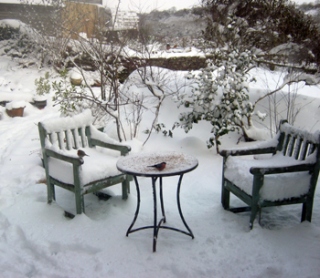Salmon of Wisdom – Bradán Feasa
 |
| Atlantic salmon |
Like calls to like, and the Salmon of Wisdom leaps from her saltwater home to her freshwater home, and then into air. Over and over she leaps the falls, bruised, battered, bleeding, until finally she is there – the Sacred Pool at the heart of the world, the Sacred Pool of the Secrets, the Sacred Pool where she was born.
Home. Water to water to air to water.
Salmon is the oldest being. Salmon lives now in the Sacred Pool, eating the nuts of inspiration from the nine hazel trees, the poets’ trees. Salmon is wise; knows how to live in three worlds, knows when it’s time to return. Salmon now is charged with keeping counsel for those who are ready to seek it out, who are ready to give away their old life for the sake of the new.
Those who approach Salmon at the right time in the right manner will be given the ability to see through the veils between this world and the other.
Those, on the other hand, who arrive too young, too unformed, or who have hungered for the wrong thing or grown fat on that which belongs to others will not make it up the falls; not this time. Or if they do, they will find their fingers burned – so close, so far away; the itch of the search for wisdom never quite assuaged.
Like calls to like and the woman hears the call.
The woman has been travelling a long time. All her life, in fact. All her life she has struggled against the current, feeling in her blood the pull of the Sacred Pool. Her long skirts are ripped, her hair dishevelled, her feet torn and muddy. She is alone, apart from the old grey mare with whom she has travelled so far.
The woman is no longer young. Like calls to like. The woman is no longer beautiful to the eye. The woman does not care for adoration. Now, at last, she is free. She can glide through the shadows without notice. She can watch, she can learn.
She knows what it is to be betrayed by those she trusted. She has had her words and her dreams stolen, the lifelong work of her heart. She knows what it is to be loved, then to be cut off for not fulfilling another’s dream.
She no longer cares about about false friends, false promises. She does not care. What she cares about is the pull of the Well, the Sacred Pool. She knows the songs of the birds, she can speak with trees and plants and animals. She knows how the planets move and the way the tide sings just so on the shore.
And she knows what it is to be loved; deeply loved. More, she knows how to love; and the cost of an open heart.
She is no one’s servant, though she will serve the true of heart. The pony mare is her sister; the morning mist her friend; dusk a cloak she can wrap around her. Rain does not trouble her, nor hunger of the ordinary sort.
Like calls to like, and she can be true to the calling, only to the calling, which means she is true to herself, to everything and nothing. In her freedom she can smile into everybody’s eyes, through to their core.
Salmon has been waiting all winter, feasting on the fat of the hazel nuts. Visitors are few.
The woman kneels in the rushes and mud at the edge of the pond. A breeze whispers in the willows. The woman maybe sheds one tear. It’s been a long hard journey. She can barely breathe for the shock and joy of arriving here at the heart of the world.
Salmon swims slowly over. She is huge, magnificent, a queen of all waters.
The woman kneels, asks permission of the waters’ guardian to be here.
Salmon disgorges a nut, soaked in inspiration: Awen, the eternal fire in the head.
The woman lifts the nut from the water, holds it as if it were gold, gazes into Salmon’s eyes.
In that moment she learns what will finally change her life: there is a current beneath the current; a reverse current that will always take her, without struggle, to where she needs to be. All she need do is nose it out. All she need do is surrender, relinquish control. Water will find her, take her.
Then she will have brought her life into balance: the perfect tension between the path of least resistance and the path of the will; the path that will take her beyond need, beyond striving, to the heart at the heart of it all, which is Love.
© Roselle Angwin, October 2018






